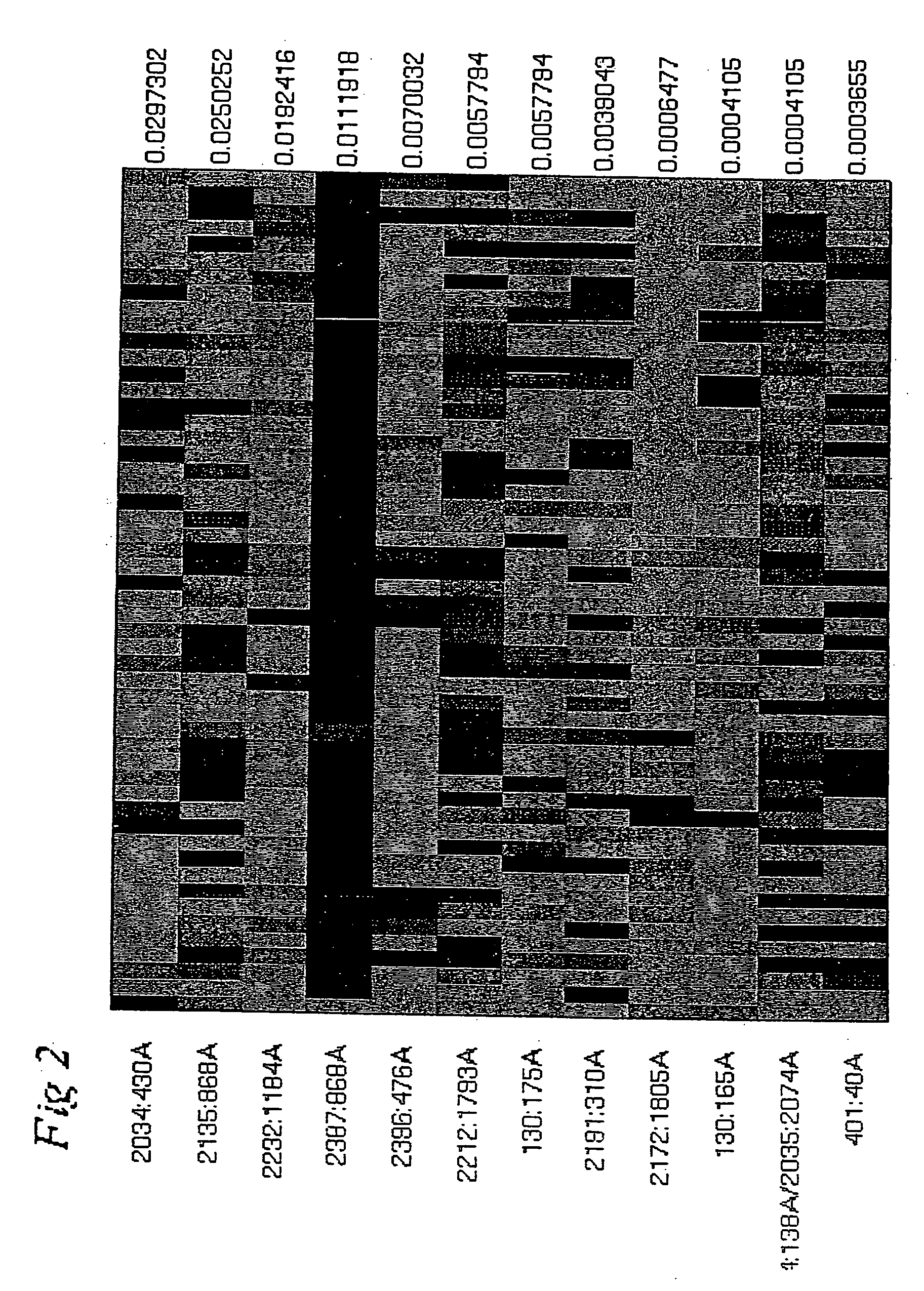Diagnosis of diseases associated with angiogenesis
a disease and angiogenesis technology, applied in the field of diagnosis of diseases associated with angiogenesis, can solve the problems of inability to diagnose, limit treatment, and death of patients, and achieve the effects of reducing the risk of angiogenesis, and improving the survival ra
- Summary
- Abstract
- Description
- Claims
- Application Information
AI Technical Summary
Benefits of technology
Problems solved by technology
Method used
Image
Examples
example 2
Diagnosis of Diseases Associated With Angiogenesis
[0061] In order to be able to relate the methylation pattern to one of the diseases associated with angiogenesis, it is first required that the DNA methylation patterns are investigated for a group of patients with disease and a group of healthy subjects. These investigations are conducted, for example, analogously to Example 1. The results thus obtained are stored in a database and CpG dinucleotides are identified which are differently methylated in the two groups. This can be done by determination of individual CpG methylation rates, as is possible but is conducted relatively inaccurately, e.g., by sequencing, or, however, it can be produced by a very accurate methylation-sensitive "primer extension reaction". Also, simultaneous analysis of the entire methylation state is possible, and the patterns can be compared, e.g., by means of cluster analyses that can be conducted, e.g., by a computer.
[0062] Subsequently, it is possible to a...
example 3
Conducting Methylation Analysis in the CDKN2A gene
[0064] In the first step, a genomic sequence is treated with the use of bisulfite (hydrogen sulfite, disulfite) in such a way that all of the unmethylated cytosines at the 5-position of the base are modified such that a base that is different in its base-pairing behavior is formed, while the cytosines that are methylated in the 5-position remain unchanged. If bisulfite is used for the reaction, then an addition occurs on the unmethylated cytosine bases. Also, a denaturing reagent or solvent as well as a radical trap must be present. A subsequent alkaline hydrolysis then leads to the conversion of unmethylated cytosine nucleobases to uracil. This converted DNA serves for the detection of methylated cytosines. In the second step of the method, the treated DNA sample is diluted with water or an aqueous solution. Preferably, a desulfonation of the DNA is then conducted. In the third step of the method, the DNA sample is amplified in a po...
example 4
Digital Phenotype
[0066] The following example describes the comparison of squamous cell carcinomas of the lungs with the corresponding surrounding normal tissue. Fluorescently labeled primers were used for the multiplex PCRs in order to amplify 8 fragments per reaction. All PCR products from each individual were mixed and hybridized on glass slides on which was applied a pair of immobilized oligonucleotides at each position. Each of these detection oligonucleotides was designed to hybridize to bisulfite-converted sequences found at CpG sites that had been present originally in either the unmethylated (TG) or methylated (CG) state. The hybridization conditions were selected for the detection of differences in single nucleotides of TG and CG variants. The ratios of the two signals were calculated on the basis of a comparison of the intensities of the fluorescing signals.
[0067] The information is then used in a weighted matrix (see FIG. 1 or 2) to determine the CpG methylation differen...
PUM
| Property | Measurement | Unit |
|---|---|---|
| length | aaaaa | aaaaa |
| heat-stable | aaaaa | aaaaa |
| fluorescent | aaaaa | aaaaa |
Abstract
Description
Claims
Application Information
 Login to View More
Login to View More - R&D
- Intellectual Property
- Life Sciences
- Materials
- Tech Scout
- Unparalleled Data Quality
- Higher Quality Content
- 60% Fewer Hallucinations
Browse by: Latest US Patents, China's latest patents, Technical Efficacy Thesaurus, Application Domain, Technology Topic, Popular Technical Reports.
© 2025 PatSnap. All rights reserved.Legal|Privacy policy|Modern Slavery Act Transparency Statement|Sitemap|About US| Contact US: help@patsnap.com


